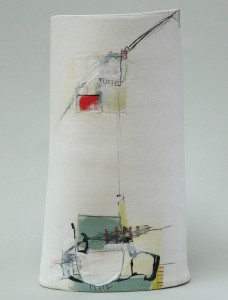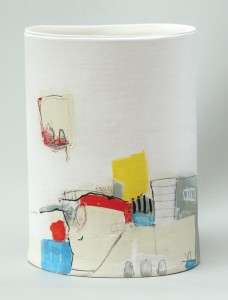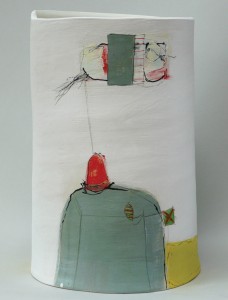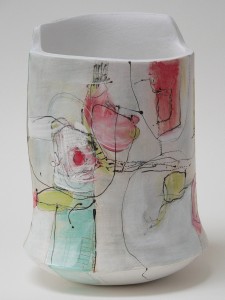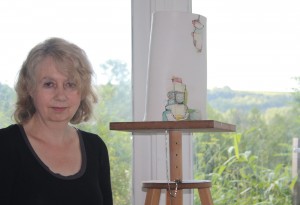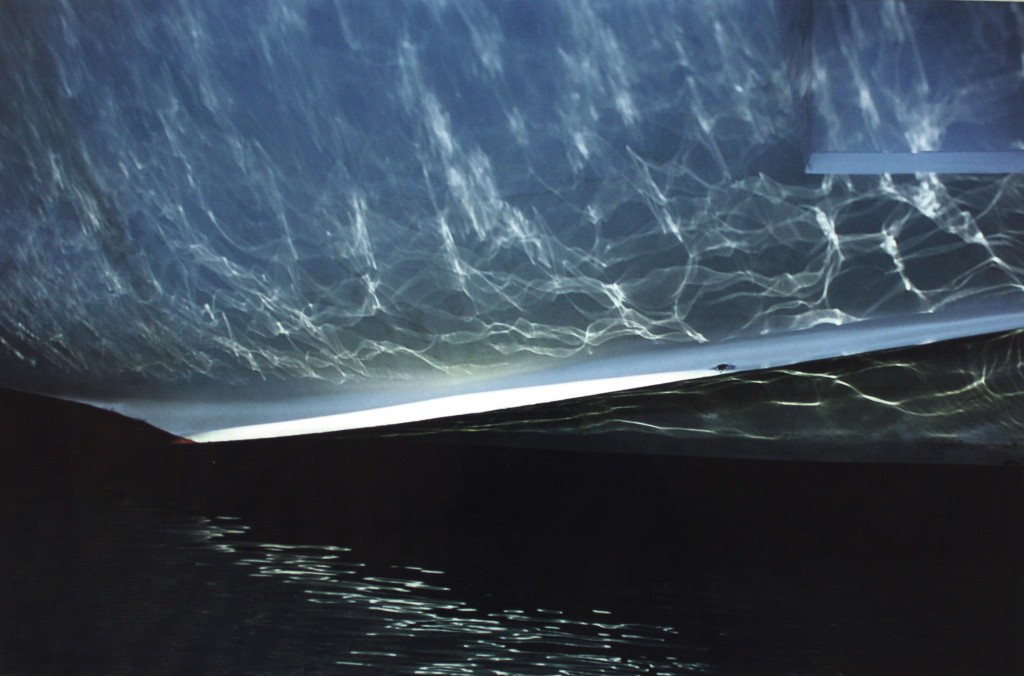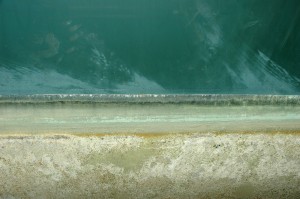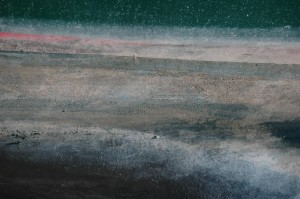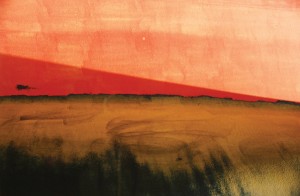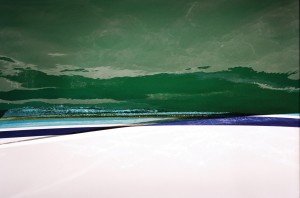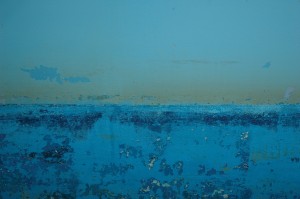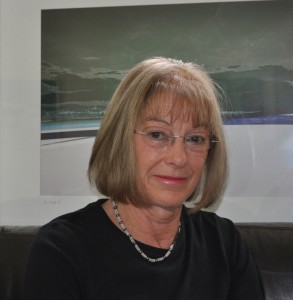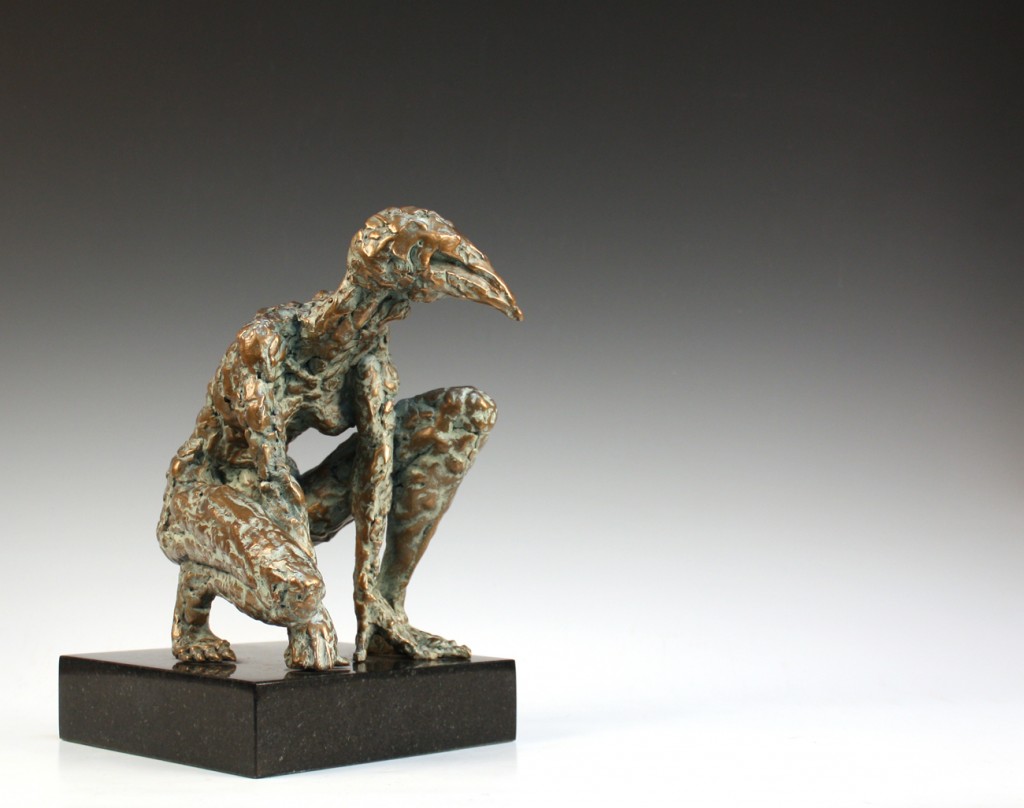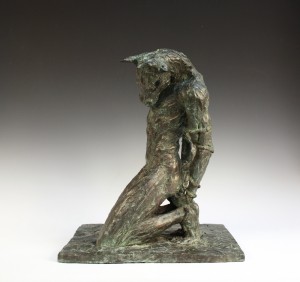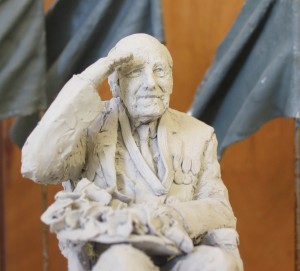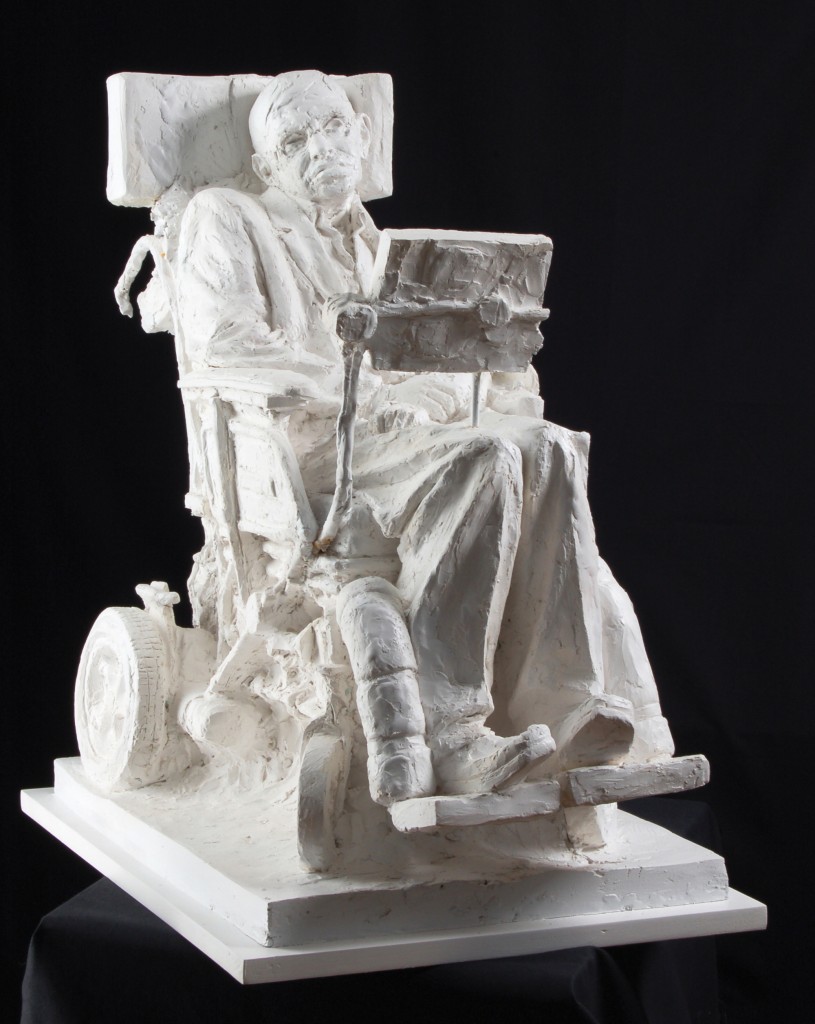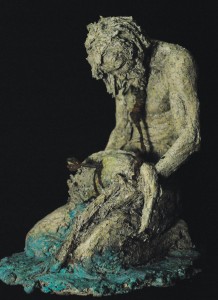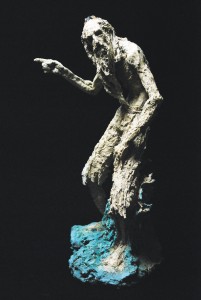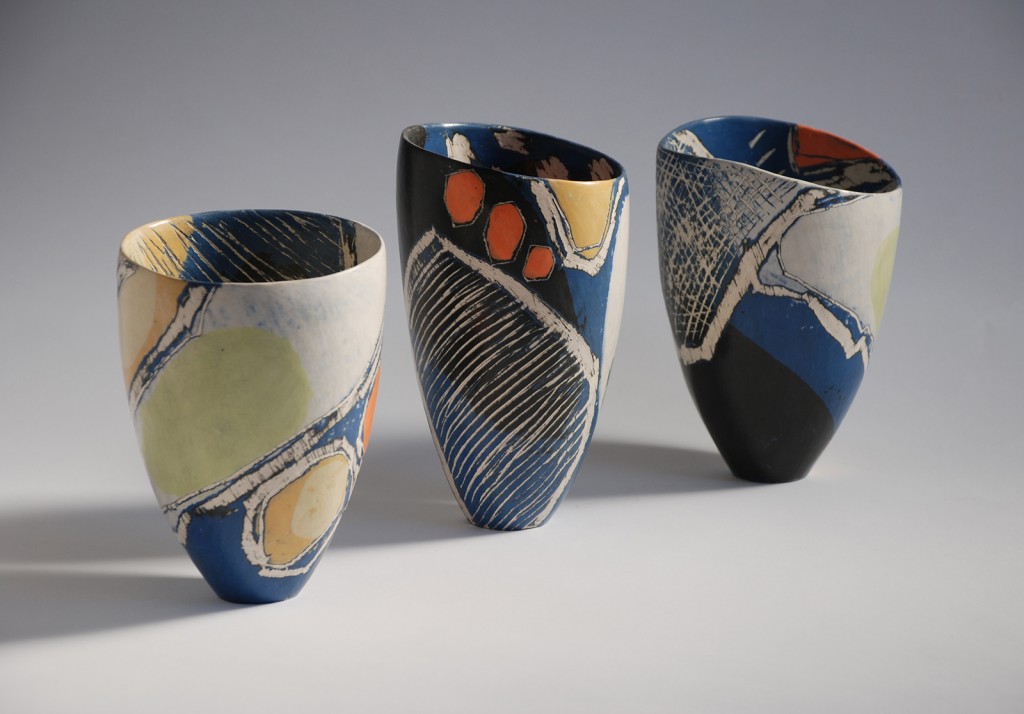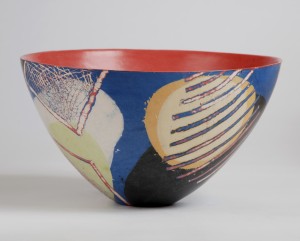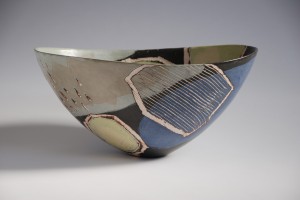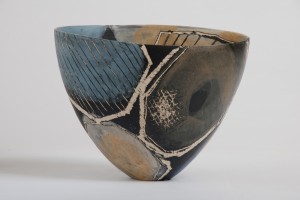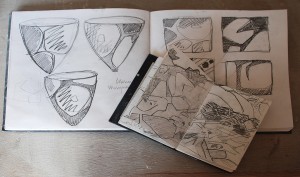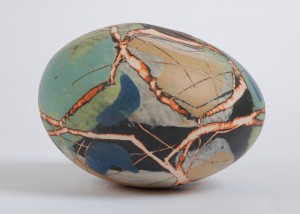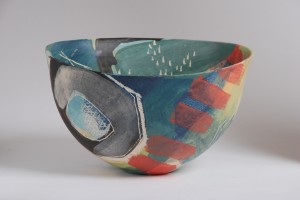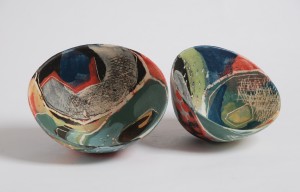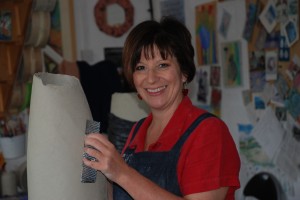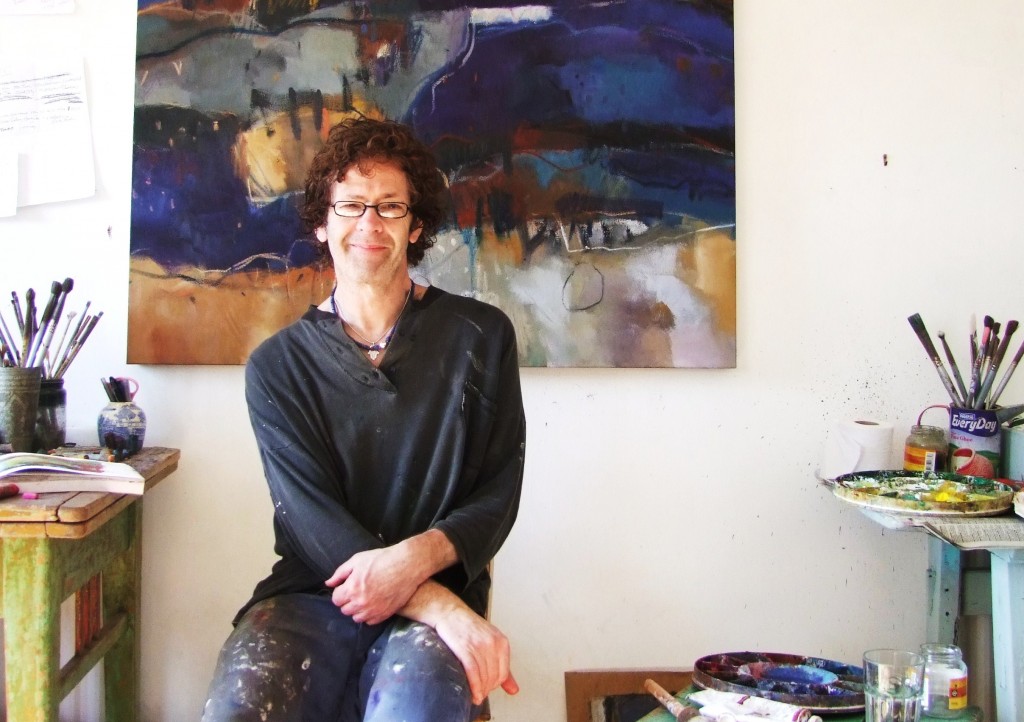
Andy Waite is an Arundel-based artist, best known for his vibrant semi-abstract landscape paintings. Nicholas Toovey looks at a different aspect of the artists oeuvre based around figures and human emotions.
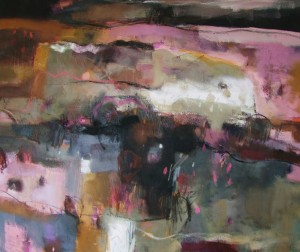
Andy was born in Buckinghamshire and after a time in Kent moved to Sussex. While studying art and design he lived in Findon, spending lots of time on and around the South Downs, with Cissbury and Chanctonbury Rings becoming favourite haunts. In 1978 Andy settled in Arundel, a place he describes as ‘an amazing location, you can be up on the downs within 15 minutes and the sea is only 3 miles away’. He is unquestionably inspired by the surrounding Sussex landscape that has kept him in the county for the last forty years. The neighbouring countryside is interpreted in sketchbooks later translating into oils on canvas in his landscape paintings that are most synonymous with his name.
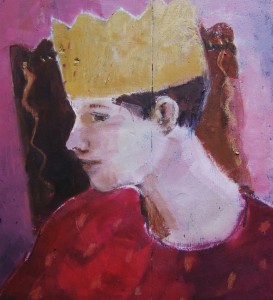
Although landscape has been his main output, Andy has also always been interested in life drawing, which he undertakes in a swift and spontaneous way. It would be easy to assume that his ‘Every Day Icons’ are a progression from these figurative sketches, but in fact were created as a deliberate separate series. Informed by his other works and influenced by his trips to Italy, these icons were made with the concept that anyone, not just religious figures, might be revered or regarded as sacred. The faces depicted are based around friends or family and radiate a range of emotions from the quite dark to the joyous. ‘Some are searching, others yearning, some have found contentment in the moment. All are being honoured no matter what their state of mind’ says the artist. Whilst painting the images around these specific feelings, the emotion sometimes change during the painting process. Once completed, Andy assimilates the works for a few days titling them appropriately with a name that is almost suggested by the painting itself.
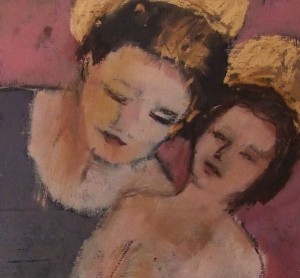
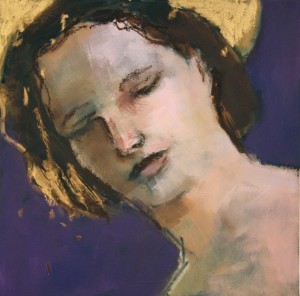
The comparison to iconography is born from the palette used by Andy that echoes those used in Byzantine and Renaissance portrayals of religious figures. These were often embellished with gold leaf and due to the inherent cost it was reserved for the holiest elements such as halos. Ultramarine blue was a similarly expensive colour to create due to the main ingredient of lazulite and the difficulty of extracting the strong blue from the mineral; as a result, this was often used for the robes of the Virgin Mary and infant Christ. These colours were intended to lead the eye of the viewer to the key elements of the religious works when contrasted with the earth colours like ochre and umber. The supports of Andy’s paintings vary from modern boards to reclaimed wood, sometimes with several pieces adhered together to make a single panel, those left unfinished artificially age his contemporary interpretation of a tradition that started in medieval times.
The series of ‘Every Day Icons’ exemplifies the artist’s handling of the human form and Andy’s ability to illustrate unequivocal emotion. He portrays these feelings with an inimitable softness and subtlety. Ultimately, it is this sensitivity that makes the work extremely engaging and distinctively his own.
For more visit Andy’s website
Nicholas’ article was originally published in Sussex Life magazine in December 2011.
